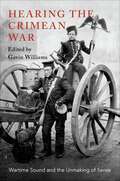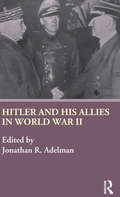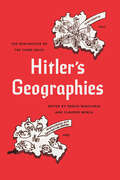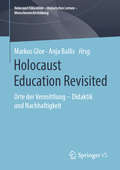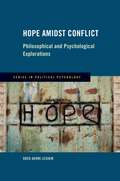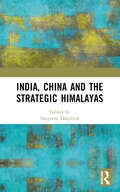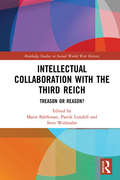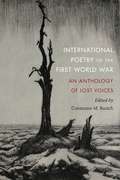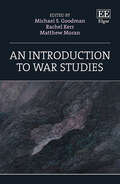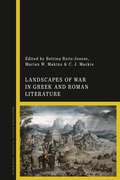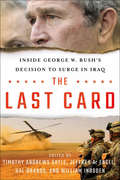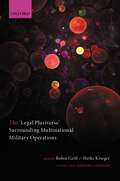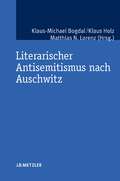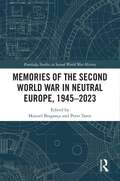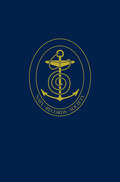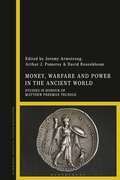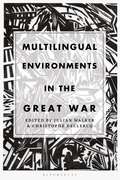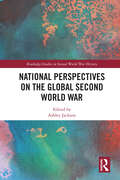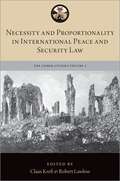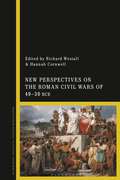- Table View
- List View
Hearing the Crimean War: Wartime Sound and the Unmaking of Sense
What does sound, whether preserved or lost, tell us about nineteenth-century wartime? Hearing the Crimean War: Wartime Sound and the Unmaking of Sense pursues this question through the many territories affected by the Crimean War, including Britain, France, Turkey, Russia, Italy, Poland, Latvia, Dagestan, Chechnya, and Crimea. Examining the experience of listeners and the politics of archiving sound, it reveals the close interplay between nineteenth-century geographies of empire and the media through which wartime sounds became audible--or failed to do so. The volume explores the dynamics of sound both in violent encounters on the battlefield and in the experience of listeners far-removed from theaters of war, each essay interrogating the Crimean War's sonic archive in order to address a broad set of issues in musicology, ethnomusicology, literary studies, the history of the senses and sound studies.
Hitler and His Allies in World War Two
In an area where in-depth studies of Hitler's relations with Nazi Germany's allies, and the failure of Nazi Germany to make more effective use of them during the war, are scant, this is a survey that looks at the Soviet Union, Japan, France, Italy, Spain, Romania and Hungary and their relationship to Nazi Germany. Using a comparative approach, seven case studies examine themes such as co-operation and resistance, military and economic aid, treatment of Jews, relations with the enemies and the popular sentiment towards Germany. Jonathan Adelman has provided students of the Second World War with a welcome mine of information and a unique perspective on a much-studied topic.
Hitler's Geographies: The Spatialities of the Third Reich
Lebensraum: the entitlement of “legitimate” Germans to living space. Entfernung: the expulsion of “undesirables” to create empty space for German resettlement. During his thirteen years leading Germany, Hitler developed and made use of a number of powerful geostrategical concepts such as these in order to justify his imperialist expansion, exploitation, and genocide. As his twisted manifestation of spatial theory grew in Nazi ideology, it created a new and violent relationship between people and space in Germany and beyond. With Hitler’s Geographies, editors Paolo Giaccaria and Claudio Minca examine the variety of ways in which spatial theory evolved and was translated into real-world action under the Third Reich. They have gathered an outstanding collection by leading scholars, presenting key concepts and figures as well exploring the undeniable link between biopolitical power and spatial expansion and exclusion.
Holocaust Education Revisited: Orte der Vermittlung – Didaktik und Nachhaltigkeit (Holocaust Education – Historisches Lernen – Menschenrechtsbildung)
Der Band befasst sich mit pädagogischen Konzepten der Holocaust Education, die aufgrund gesellschaftlicher Veränderungen einem Wandel unterworfen sind. Historische Orte werden um- und neu gestaltet sowie Geschichte an die Medienvorlieben der Lernenden angepasst. Solchermaßen soll eine nachhaltige Auseinandersetzung mit dem Themenfeld Holocaust und NS-Verbrechen initiiert werden. Im 21. Jahrhundert sind die Fragen nach dem Warum, Wie und Wo von Holocaust Education neu zu stellen und vorliegender Band bietet Antworten darauf.
Hope Amidst Conflict: Philosophical and Psychological Explorations (Series in Political Psychology)
How does hope for peace form and proliferate in the seemingly hopeless reality of conflict, and why do despair and fear often prevail? How do political elites utilize hope and skepticism to manipulate their public during conflict? And how does hope manifest itself at the societal level? Hope Amidst Conflict takes on the bold challenge of answering these questions by merging insights from philosophy and social psychology and investigating hope for peace in an intense political context--the intractable, violent conflict between Israel and the Palestinians. Hope for peace has gathered scholarly attention in the last decade. However, the work has been focusing on the mechanisms of hope while failing to ask the bigger questions about hope's role in the politics of conflict. Moreover, existing research presents a confusing account of what hope "is" and how it can be measured. This confusion yielded mixed results regarding the levels and consequences of hope during conflict. Combining the wisdom of more than a hundred years of scholarship on hope with insights from original data collected in conflict zones, Hope Amidst Conflict offers a novel conceptualization of hope and a standardized way to measure hope in a wide array of contexts. Using these new approaches, the book embarks on a journey to identify the determinants and consequences of hope amidst conflict.
India, China and the Strategic Himalayas
This book analyses strategic discourse on the Himalayas from the perspective of India’s interests. Home to many communities, cultures, natural resources and political boundaries, it is the geopolitical landscape of the Himalayas between India and China that dominates other narratives and discourses. The traditional notion of Himalayas as India’s frontiers and buffer is challenged by China. Despite various mechanisms to address border resolution there are violations and transgressions from China. This book examines India’s responses to the new emerging challenges in the Himalayas. How the statist discourse on strategic interests incorporates people’s discourse. It provides a nuanced understanding of India’s strategic undertakings, diplomatic initiatives and development framework. This book will be a valuable addition to existing knowledge on the Himalayas between India and China. Scholars and practitioners interested in International Relations, Strategic Studies, Himalayan Studies and South Asian Studies will find it useful. Print edition not for sale in South Asia (India, Sri Lanka, Nepal, Bangladesh, Pakistan and Bhutan)
Intellectual Collaboration with the Third Reich: Treason or Reason? (Routledge Studies in Second World War History)
The book investigates the rather neglected "intellectual" collaboration between National Socialist Germany and other countries, including views on knowledge and politics among "pro-German" intellectuals, using a comparative approach. These moves were shaped by the Nazi system, which viewed scientific and cultural exchange as part and parcel of their cultural propaganda and policy. Positive views of the Hitler regime among intellectuals of all sorts were indicative of a broader discontent with democracy that, among other things, represented an alternative approach to modernization which was not limited to the German heartlands. This book draws together international experts in an analysis of right-wing Europe under Hitler; a study which has gained new resonance amidst the wave of European nationalism in the twenty-first century.
Internal combustion engine - Multipage image (Large Print)
These diagrams of an internal combustion engine are on two pages with two diagrams per page, separated by a vertical dotted line. There is a locator dot shown, which will be at the top left of the page when the image is the right way up. Each diagram is titled in the top left and shows a phase of the combustion engine cycle. In the top of each diagram from left to right there is an intake valve, a spark plug and an exhaust valve. In the centre of the image is the cylinder with the piston in its middle. This has a water cooling jacket to the left and right. The piston is connected by a connecting rod to the crankshaft and axle at the bottom of the image. Not all elements are labelled on every diagram. The valves and crankshaft are also in different positions. The crankshaft is continuously turning clockwise (with the top moving to the right) throughout all stages. In the first diagram fuel is being drawn into the cylinder through the open intake valve as the piston moves down. In the second diagram the intake valve has closed, the piston moves up and the air and fuel mixture is squashed. In the third diagram the air and fuel mixture has been ignited by a spark from the spark plug. The mixture burns and expands rapidly driving the piston down. In the last diagram the exhaust valve is open and the piston moves up driving the exhaust out of the cylinder. There are usually at least two cylinders which comprise the whole engine. They all drive the same crankshaft but are phased so that, for example, while one cylinder will be sucking air and fuel in, another will be burning the compressed mixture and generating the power.
Internal combustion engine - Multipage image (UEB Contracted)
These diagrams of an internal combustion engine are on two pages with two diagrams per page, separated by a vertical dotted line. There is a locator dot shown, which will be at the top left of the page when the image is the right way up. Each diagram is titled in the top left and shows a phase of the combustion engine cycle. In the top of each diagram from left to right there is an intake valve, a spark plug and an exhaust valve. In the centre of the image is the cylinder with the piston in its middle. This has a water cooling jacket to the left and right. The piston is connected by a connecting rod to the crankshaft and axle at the bottom of the image. Not all elements are labelled on every diagram. The valves and crankshaft are also in different positions. The crankshaft is continuously turning clockwise (with the top moving to the right) throughout all stages. In the first diagram fuel is being drawn into the cylinder through the open intake valve as the piston moves down. In the second diagram the intake valve has closed, the piston moves up and the air and fuel mixture is squashed. In the third diagram the air and fuel mixture has been ignited by a spark from the spark plug. The mixture burns and expands rapidly driving the piston down. In the last diagram the exhaust valve is open and the piston moves up driving the exhaust out of the cylinder. There are usually at least two cylinders which comprise the whole engine. They all drive the same crankshaft but are phased so that, for example, while one cylinder will be sucking air and fuel in, another will be burning the compressed mixture and generating the power.
Internal combustion engine - Multipage image (UEB Uncontracted)
These diagrams of an internal combustion engine are on two pages with two diagrams per page, separated by a vertical dotted line. There is a locator dot shown, which will be at the top left of the page when the image is the right way up. Each diagram is titled in the top left and shows a phase of the combustion engine cycle. In the top of each diagram from left to right there is an intake valve, a spark plug and an exhaust valve. In the centre of the image is the cylinder with the piston in its middle. This has a water cooling jacket to the left and right. The piston is connected by a connecting rod to the crankshaft and axle at the bottom of the image. Not all elements are labelled on every diagram. The valves and crankshaft are also in different positions. The crankshaft is continuously turning clockwise (with the top moving to the right) throughout all stages. In the first diagram fuel is being drawn into the cylinder through the open intake valve as the piston moves down. In the second diagram the intake valve has closed, the piston moves up and the air and fuel mixture is squashed. In the third diagram the air and fuel mixture has been ignited by a spark from the spark plug. The mixture burns and expands rapidly driving the piston down. In the last diagram the exhaust valve is open and the piston moves up driving the exhaust out of the cylinder. There are usually at least two cylinders which comprise the whole engine. They all drive the same crankshaft but are phased so that, for example, while one cylinder will be sucking air and fuel in, another will be burning the compressed mixture and generating the power.
International Poetry of the First World War: An Anthology of Lost Voices
Ranging far beyond the traditional canon, this ground-breaking anthology casts a vivid new light on poetic responses to the First World War. Bringing together poems by soldiers and non-combatants, patriots and dissenters, and from all sides of the conflict across the world, International Poetry of the First World War reveals the crucial public role that poetry played in shaping responses to and the legacies of the conflict. Across over 150 poems, this anthology explores such topics as the following: · Life at the Front · Psychological trauma · Noncombatants and the home front · Rationalising the war · Remembering the dead · Peace and the aftermath of the war With contextual notes throughout, the book includes poems written by authors from America, Australia, Austria-Hungary, Belgium, Canada, France, Germany, Great Britain, India, Ireland, Italy, New Zealand, Russia, and South Africa.
An Introduction to War Studies
Commemorating 60 years of War Studies at King’s College London, this incisive and adroitly crafted book acts as a comprehensive introduction to the multidisciplinary field of war, conflict and security. Adopting a global approach, it adeptly navigates a broad spectrum of themes and theoretical perspectives which lie at the heart of this important area of study.Bringing together contributions from an array of esteemed scholars, An Introduction to War Studies covers a diverse range of topics, including international relations theories and approaches, conflict, security and development, peace and security, intelligence and international security, the history of war, conflict resolution, strategic communication, and terrorism and society. Providing concise and thematic focus, expert contributors survey the current state of knowledge within the field and explore opportunities for future scholarly inquiry.An authoritative and seminal contribution to the study of war and conflict, this book will be essential for academics, researchers, and students of war, peace and conflict, terrorism and security, and strategic studies as well as international relations and international studies.
Jet Turbine engine cross section (UEB Contracted)
In these diagrams of a jet engine, there is a cross section view through the length of the engine at the top of the page and in the bottom right of the page, a front view of the engine intake. There is a locator dot shown, which will be at the top left of the page when the image is the right way up. On the left of the page air is forced into the engine by the compressor which has many fan blades. The compressed air is fed into the combustion chamber in the middle of the page. Fuel is injected into the engine through a port in the lower centre part of the combustion chamber. This is where combustion and gas expansion takes place. On the right of the page the exhaust exits past the turbine producing the thrust of the engine. The front view shows the circular opening of the engine with lots of fan blades arranged around the central hub like a huge fan.
Jet Turbine engine cross section (UEB Uncontracted)
In these diagrams of a jet engine, there is a cross section view through the length of the engine at the top of the page and in the bottom right of the page, a front view of the engine intake. There is a locator dot shown, which will be at the top left of the page when the image is the right way up. On the left of the page air is forced into the engine by the compressor which has many fan blades. The compressed air is fed into the combustion chamber in the middle of the page. Fuel is injected into the engine through a port in the lower centre part of the combustion chamber. This is where combustion and gas expansion takes place. On the right of the page the exhaust exits past the turbine producing the thrust of the engine. The front view shows the circular opening of the engine with lots of fan blades arranged around the central hub like a huge fan.
Landscapes of War in Greek and Roman Literature
In this volume, literary scholars and ancient historians from across the globe investigate the creation, manipulation and representation of ancient war landscapes in literature. Landscape can spark armed conflict, dictate its progress and influence the affective experience of its participants. At the same time, warfare transforms landscapes, both physically and in the way in which they are later perceived and experienced. Landscapes of War in Greek and Roman Literature breaks new ground in exploring Greco-Roman literary responses to this complex interrelationship. Drawing on current ideas in cognitive theory, memory studies, ecocriticism and other fields, its individual chapters engage with such questions as: how did the Greeks and Romans represent the effects of war on the natural world? What distinctions did they see between spaces of war and other landscapes? How did they encode different experiences of war in literary representations of landscape? How was memory tied to landscape in wartime or its aftermath? And in what ways did ancient war landscapes shape modern experiences and representations of war? In four sections, contributors explore combatants' perception and experience of war landscapes, the relationship between war and the natural world, symbolic and actual forms of territorial control in a military context, and war landscapes as spaces of memory. Several contributions focus especially on modern intersections of war, landscape and the classical past.
The Last Card: Inside George W. Bush's Decision to Surge in Iraq
This is the real story of how George W. Bush came to double-down on Iraq in the highest stakes gamble of his entire presidency. Drawing on extensive interviews with nearly thirty senior officials, including President Bush himself, The Last Card offers an unprecedented look into the process by which Bush overruled much of the military leadership and many of his trusted advisors, and authorized the deployment of roughly 30,000 additional troops to the warzone in a bid to save Iraq from collapse in 2007.The adoption of a new counterinsurgency strategy and surge of new troops into Iraq altered the American posture in the Middle East for a decade to come. In The Last Card we have access to the deliberations among the decision-makers on Bush's national security team as they embarked on that course. In their own words, President George W. Bush, Vice President Dick Cheney, National Security Advisor Stephen Hadley, Secretary of State Condoleezza Rice, White House Chief of Staff Joshua Bolten, Secretary of Defense Robert Gates, and others, recount the debates and disputes that informed the process as President Bush weighed the historical lessons of Vietnam against the perceived strategic imperatives in the Middle East. For a president who had earlier vowed never to dictate military strategy to generals, the deliberations in the Oval Office and Situation Room in 2006 constituted a trying and fateful moment.Even a president at war is bound by rules of consensus and limited by the risk of constitutional crisis. What is to be achieved in the warzone must also be possible in Washington, D.C. Bush risked losing public esteem and courted political ruin by refusing to disengage from the costly war in Iraq. The Last Card is a portrait of leadership—firm and daring if flawed—in the Bush White House.The personal perspectives from men and women who served at the White House, Foggy Bottom, the Pentagon, and in Baghdad, are complemented by critical assessments written by leading scholars in the field of international security. Taken together, the candid interviews and probing essays are a first draft of the history of the surge and new chapter in the history of the American presidency.
The 'Legal Pluriverse' Surrounding Multinational Military Operations
The 'Legal Pluriverse' Surrounding Multinational Military Operations conceptualizes and examines the "Pluriverse": the multiplicity of rules that apply to and regulate contemporary multinational missions, and the array of actors involved. These operations are further complicated by changes to the classification of the conflict, and the asymmetry of obligations on participants. Structured into five parts, this work seeks, through the diversity of its authorship, to set out the web of legal regimes applicable to military operations including forces from more than one state. It maps out the ways in which different regimes interact, beginning with the laws of armed conflict and their relation to international humanitarian and human rights norms, and extending through to areas like law of the sea and environmental law. A variety of contributors systematically compile and take stock of the various legal regimes that make up the pluriverse, assessing how these rules interact, exposing norm conflicts, areas of legal uncertainty, or protective loopholes. In this way, they identify and evaluate approaches to better streamline the different applicable legal frameworks with a view to enhancing cooperation and thereby ensuring the long-term success of multinational military operations.
Literarischer Antisemitismus nach Auschwitz
"Walser-Debatten" und "Grass-Geständnis" belegen es: die Öffentlichkeit ist hellhörig, wenn es um Antisemitismus-Verdacht in der Literatur geht. Jetzt ist auch die Literaturwissenschaft aufgefordert, gezielt Judenbilder und deren Verwendung in der deutschsprachigen Literatur seit 1945 zu untersuchen. Dabei geht es nicht um eine kriminalistische "Überführung" von Schriftstellern, sondern um die Funktion und Verwendung ihrer Texte in einem Diskurs, der das Literarische überschreitet. Erstmals rollt der Band das gesamte Thema systematisch auf.
Memories of the Second World War in Neutral Europe, 1945–2023 (Routledge Studies in Second World War History)
This edited volume is a sequel to, and a development of, The Long Aftermath: Cultural Legacies of Europe at War, 1936-2016 (2016). It focuses on the six major European countries and states that remained officially neutral throughout the Second World War, namely Ireland, Portugal, Spain, Sweden, Switzerland, and the Vatican. Its transnational, comparative and interdisciplinary approach addresses complex questions pertaining to collective remembrance, national policies and politics, and intellectual as well as cultural responses to neutrality during and after the conflict. The contributions are from a broad range of scholars working across the disciplines of history, literature, film, media, and cultural studies. Their thought-provoking chapters challenge many assumptions about neutrality in the post-war European and global context, thereby filling a gap in the existing scholarship. Common themes that run through the volume include the intertwined and dynamic links between neutrality and moral responsibility during and after the Second World War, the importance of memory politics and popular culture in shaping collective memories, and the impact of the Holocaust in shifting traditional perspectives on neutrality since the 1990s. This volume will be of interest to undergraduates, postgraduates, scholars interested in the field of memory studies, as well as non-specialist readers.
The Milne Papers: Volume III: The Royal Navy and the American Civil War, 1862–1864 (Navy Records Society Publications)
This collection covers the period February 1862-March 1864, which constituted the final two years and one month that Rear-Admiral Sir Alexander Milne commanded the Royal Navy’s North America and West India Station. Its chief focus is upon Anglo-American relations in the midst of the American Civil War. Whilst the most high-profile cause of tension between the two countries — the Trent Affair — had been resolved in Britain’s favour by January 1862, numerous sources of discord remained. Most turned on American efforts to blockade the so-called Confederacy, efforts that often ran afoul of international law, not to mention British amour-propre. As commander of British naval forces in the theatre, Milne’s decisions and actions could and did have a major impact on the state of affairs between his government and that of the US. While noting in one private exchange with the British ambassador to Washington, Richard, Lord Lyons, that he had been "enjoined to abstain from any act likely to involve Great Britain in hostilities with the United States," Milne added ominously, "yet I am also instructed to guard our Commerce from all illegal interference" and it is plain from his correspondence that both he and the British government were prepared to use force in that undertaking. Thus, between apparently high-handed behaviour by the US Navy and Milne’s and the Palmerston government’s resolve not to be pushed beyond a certain point, the ingredients for a major confrontation between the two countries existed. Yet most of Milne’s efforts were directed toward preventing such a confrontation from occurring. In this endeavour he was joined by Lyons and by the British government. No vital British interest was at stake in the conflict raging between North and South, and thus the nation was unlikely to become directly involved in it unless provoked by rash US actions. Yet there was no shortage of such provocations: the seizure of British merchant vessels bound from one neutral port to another, detaining such ships without first conducting a search of their cargo for evidence of contraband of war, the de facto blockade of British colonial ports, apparent violations of British territorial waters, the seizure of British merchantmen off the neutral port of Matamoros, Mexico, and the use of neutral ports as bases of operations by US warships among them. In responding to these and other sources of dispute between the US and Britain, Milne proved adept at pouring oil on troubled waters, so much so that in a late 1863 letter to Foreign Secretary Lord Russell, Lyons lamented his impending departure from the station: "I am very much grieved at his leaving….No change of admirals could be for the better." This collection centres upon Milne’s private correspondence, especially that between him and Lyons, First Lord of the Admiralty the Duke of Somerset and First Naval Lord Vice Admiral Sir Frederick Grey. It also includes private letters to and from many of Milne’s other professional correspondents and important official correspondence with the Admiralty.
Money, Warfare and Power in the Ancient World: Studies in Honour of Matthew Freeman Trundle
Money, Warfare and Power in the Ancient World offers twelve papers analysing the processes, consequences and problems involved in the monetization of warfare and its connection to political power in antiquity. The contributions explore not only how powerful men and states used money and coinage to achieve their aims, but how these aims and methods had often already been shaped by the medium of coined money – typically with unintended consequences. These complex relationships between money, warfare and political power – both personal and collective – are explored across different cultures and socio-political systems around the ancient Mediterranean, ranging from Pharaonic Egypt to Late Antique Europe. This volume is also a tribute to the life and impact of Professor Matthew Trundle, an inspiring teacher and scholar, who was devoted to promoting the discipline of Classics in New Zealand and beyond. At the time of his death, he was writing a book on the wider importance of money in the Greek world. A central piece of this research is incorporated into this volume, completed by one of his former students, Christopher De Lisle. Additionally, Trundle had situated himself at the centre of a wide-ranging conversation on the nature of money and power in antiquity. The contributions of scholars of ancient monetization in this volume bring together many of the threads of those conversions, further advancing a field which Matthew Trundle had worked so tirelessly to promote.
Multilingual Environments in the Great War
This book explores the differing ways in which language has been used to try to make sense of the First World War. Offering further developments in an innovative approach to the study of the conflict, it develops a transnational viewpoint of the experience of war to reveal less expected areas of language use during the conflict. Taking the study of the First World War far beyond the Western Front, chapters examine experiences in many regions, including Africa, Armenia, post-war Australia, Russia and Estonia, and a variety of contexts, from prisoner-of-war and internment camps, to food queues and post-war barracks. Drawing upon a wide variety of languages, such as Esperanto, Flemish, Italian, Kiswahili, Portuguese, Romanian and Turkish, Multilingual Environments in the Great War brings together language experiences of conflict from both combatants and the home front, connecting language and literature with linguistic analysis of the immediacy of communication.
National Perspectives on the Global Second World War (Routledge Studies in Second World War History)
This collection of essays, written by authors of different nationalities, explores the experiences of the countries that were not numbered among the Second World War’s major belligerents, including colonies, 'lesser' powers, and neutral nation states. The story of the war is often dominated by the experiences, actions, and historical narratives of the major belligerent powers. By focusing on the war history of ten diverse countries, this analysis of the conflict’s global manifestations facilitates greater empathy with the experience of polities and societies dragged into regional and international conflicts. The volume offers valuable insights on the war’s place in national culture and collective memory. National Perspectives on the Global Second World War is an essential contribution to the study of the Second World War and will be of particular interest to scholars of imperial and colonial history, military history, and global history.
Necessity and Proportionality in International Peace and Security Law (The Lieber Studies Series)
Necessity and proportionality hold a firm place in the international law governing the use of force by states, as well as in the law of armed conflict. However, the precise contours of these two requirements are uncertain and controversial. The aim of Necessity and Proportionality in International Peace and Security Law is to explore how necessity and proportionality manifest themselves in the modern world under the law governing the use of force and the law of armed conflict, and how they relate to each other. The book explores the ways in which necessity and proportionality are applied in practice and addresses pressing legal issues in the law on the use of force, including the controversial "unwilling and unable" test for the use of force in self-defense, drones and targeted killing, the application of this legal regime during civil war, and the need for further transparency in states' justification for the use of force in self-defense. The analysis of the role of military necessity within the law of armed conflict on the modern battlefield focuses on the history and nature of the principle of military necessity, the proper application of the principle of proportionality, how commanders should account for mental harm in calculating proportionality, and the role artificial intelligence and autonomous weapons systems may play in proportionality analysis. The book concludes with a discussion of the potential role of proportionality in the law governing post-conflict contexts.
New Perspectives on the Roman Civil Wars of 49–30 BCE
Offering new and original approaches to the Roman civil wars of 49-30 BCE, the eleven papers presented here for the first time shed light on this crucial moment in the forging of Roman identity. They engage with a variety of problems and topics in political discourse (diplomacy, the concept of libertas, divine paternity); socio-economic structures (allied rulers, military officials, civil war finances, Agrippa's family); material culture (the coinage of Julius Caesar, the physical remains of Corfinium); and literary commemoration (Sallust on trauma, the lost Histories of Asinius Pollio). The case studies presented here contribute to our understanding of a period that is just as fundamental for our view of the Romans as it was to the Romans themselves. Arguing for the unity of the period in question, the volume deploys a multiplicity of methodologies to analyse how the trauma of armed conflict and the breakdown of accepted socio-cultural models not only mediated the contemporary experience of Roman civil war, but also left a lasting impression upon how Romans viewed the world. Incisive and critical, these contributions by a diverse team of international researchers, both emerging scholars and leaders in their fields, offer a new window into the world of the late Republic and early Principate.
